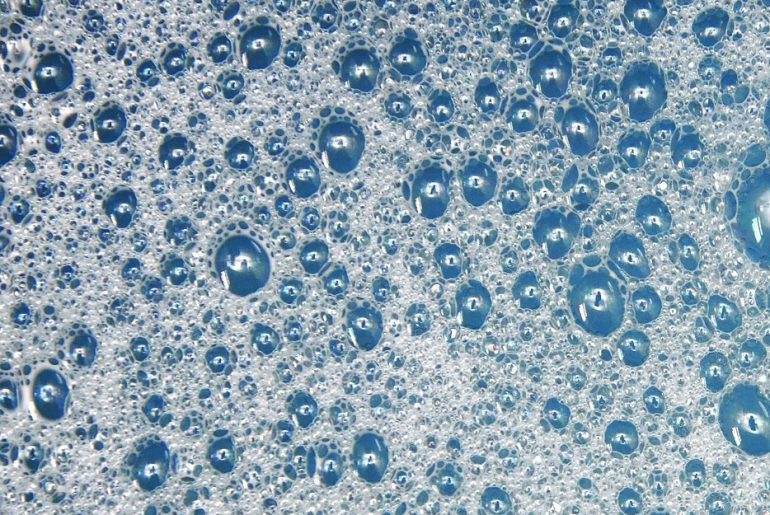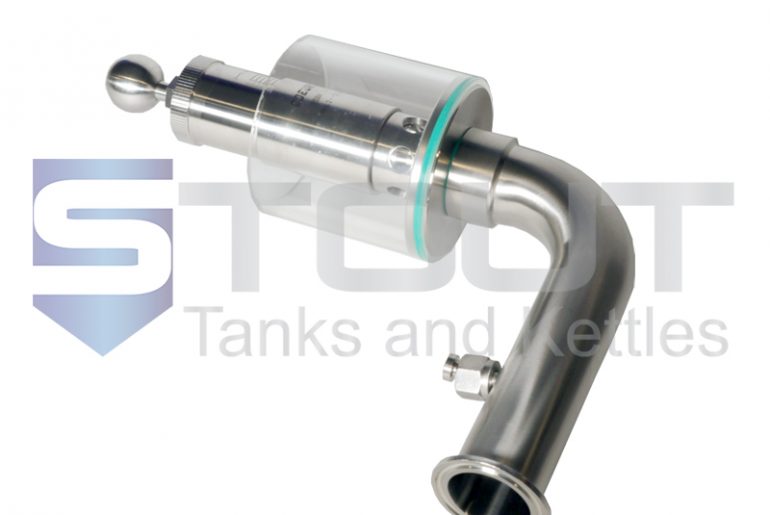The Myth about Big Electric Brewing:
There is a myth out there that electric brewing systems won’t work on brewhouses larger than 3 or 3.5 BBL. Some equipment suppliers don’t even offer electric systems larger than 3.5 BBL. The myth is that you can’t effectively control the temperature or the rate of the boil, or that it is not possible to get enough power to run the brewery.
Well, it just isn’t so. At Stout Tanks and Kettles, we have been designing and building electric brewhouses all the way up to 15 BBL for years, and our customers will testify that their larger electric systems not only work great, but are much more effective and easier to use than steam or gas fired equipment. If your building has the power available, you can have a larger electric system than you thought possible.

The advantages of electric brewing are well known. Electric heat is practically 100% efficient, meaning that all of the heat generated by the electric element goes into the wort or into the hot liquor tank. In direct and indirect fire systems much of the heat generated by the flame is wasted on heating the air around the kettle instead of heating the contents of the kettle and then going up and out the chimney. Likewise, steam boilers lose a significant amount of power depending on their heat source, and how far the heat has to be conveyed from boiler to brew kettle. Safety is also a big factor in favor of electric. Open flames from gas fired systems can be dangerous in environments where flammable grain dust and hops can be readily found. Also, carbon monoxide can kill you. Every combustion system has to provide a way to safely ventilate the dangerous exhaust gasses, and also to provide fresh make-up air to replace the volume of air that goes up the chimney. Ventilation can be a significant expense in your build out. If you can avoid that expense, why not? With proper use of ground fault circuit interrupters (GFCI), the risk of electric shock is effectively eliminated with a properly designed electric system. The result is that an electric system can be a safer and cheaper option.
Electric brewing will often cost less than steam or direct fire. Installing the system can cost less because there is no ventilation or expensive steam piping to install. In many cases, the cost of buying and installing steam pipe is much more than the cost of the boiler itself. The cost of operating the system can also be less, depending on the price of energy in your area. In many areas of the country, electricity’s cost is favorable to natural gas, especially when you factor in the efficiency of the system. There are other operating costs to consider as well. Boilers require a state license to operate, with annual inspections and fees. Plus, it is necessary to conduct monthly tests on the boiler water chemistry – due to the expertise and equipment required, most breweries outsource this job for a monthly fee of $100 or more, plus the cost of the chemicals themselves. Steam boilers can take considerable amount of space in your brewery, space that you are paying rent on. So it’s not just a matter of the price per BTU to figure out which system is cheaper to operate.
Electric systems may also have the added benefit of carbon neutrality. Depending on your electrical utility, your electricity could largely come from wind or solar. The environmental benefits are sometimes important to your consumers. According to a recent article by Forbes, 90% of millennial consumers would be will ing to switch brands because of a social or environmental cause.[1] Being able to tout carbon neutral brewing has been a feather in the cap of more than one of our customers.
Some people have a negative view of electric brewing systems. This is because there are some suppliers and “do-it-yourselfers” who didn’t design their systems well. By not providing enough kilowatts to achieve an acceptable evaporation rate or heating times, not providing temperature control of the elements, or by not ensuring that the temperatures in the kettles are well controlled, these systems cannot perform as required. The experienced brewer-designers at Stout Tanks and Kettles and our controls partner Brewmation have thought through the potential pitfalls and designed the equipment to ensure that it not just works, but makes the brewer’s job easier so he or she can brew the best beer possible.
The main reason people like electric is because it is easy to use and just better. It’s more comfortable to work in a brewery that does not unnecessarily heat the entire brewery and the people in it. You can
also set your automated system to begin heating the water in the hot liquor tank early in the morning so that by the time you get the brewery, your water is hot and ready to go.
Mash
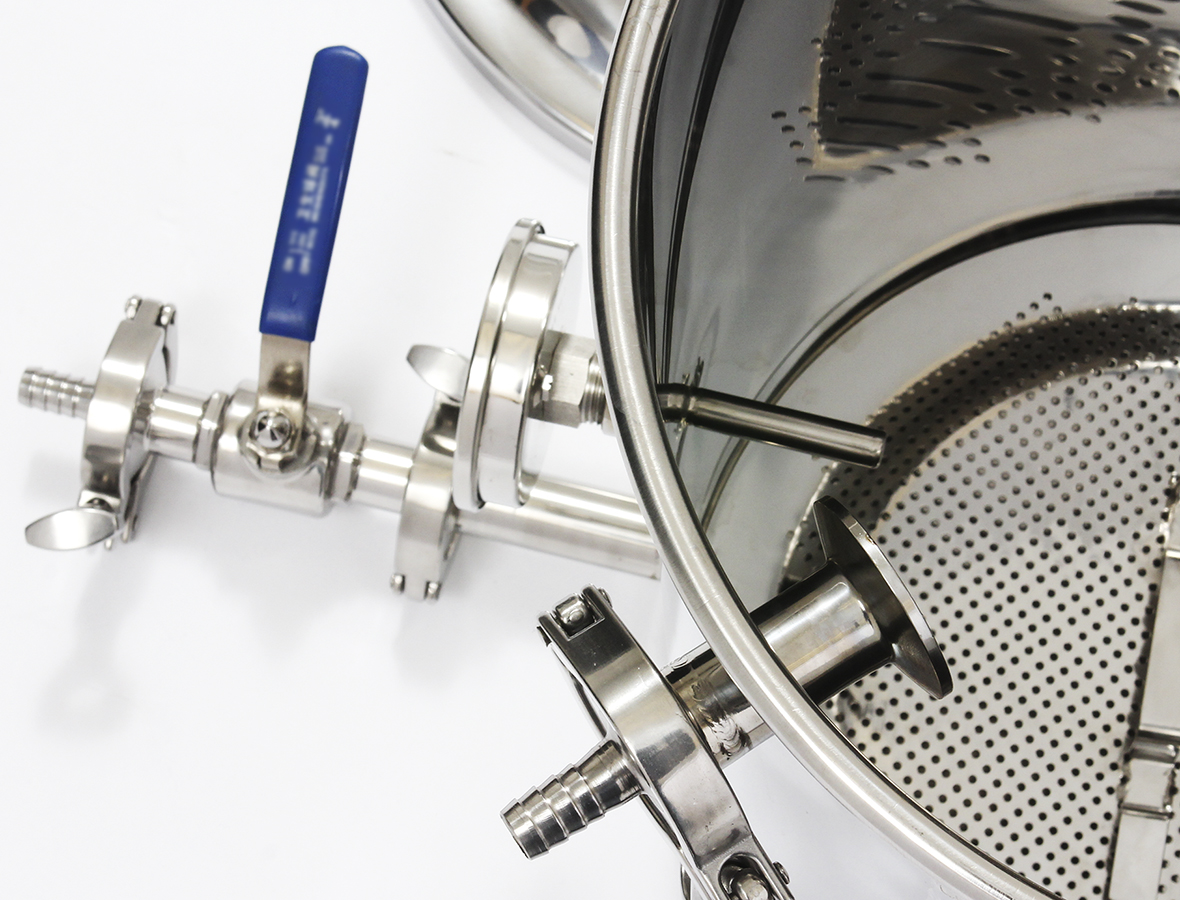
Precise temperature control is necessary at all stages of brewing, especially mashing. Temperature has a big impact on the enyzmes that convert complex carbohydrates into simpler sugars during the mash. Different enzymes catalyze reactions at different temperatures. Precisely controlling the temperature during the mash dictates how the enzymes catalyze the starches into sugars. The temperature profile of the mash and wort over time is responsible for the flavor profile of the beer. Being able to reproduce the temperature profile over time allows consistency of flavor from batch to batch. A well-designed electric system will provide hot liquor at just the right temperature to the mash. And, by adding optional HERMS or RIMS to your electric system, you can easily perform more complex step mashes.
The chart below shows the optimal rest temperatures for several of the major enzymes at work during the mash.[2] Brewers very carefully raise the temperature of their mash for specific periods of time. Care must be taken. Once the temperature goes up, the enzymes are denatured, and stop working. There is no going back. Mashes must be precisely stepped by temperature and time.

Boil
Once the mashing is complete, and you have completed sparging and lautering, it is time to boil the wort. This is where electric brewing shines, even in larger systems. The chart below shows how long it takes to bring wort to a boil. With a properly sized electric system, you can bring your wort to a boil in about 8 minutes.
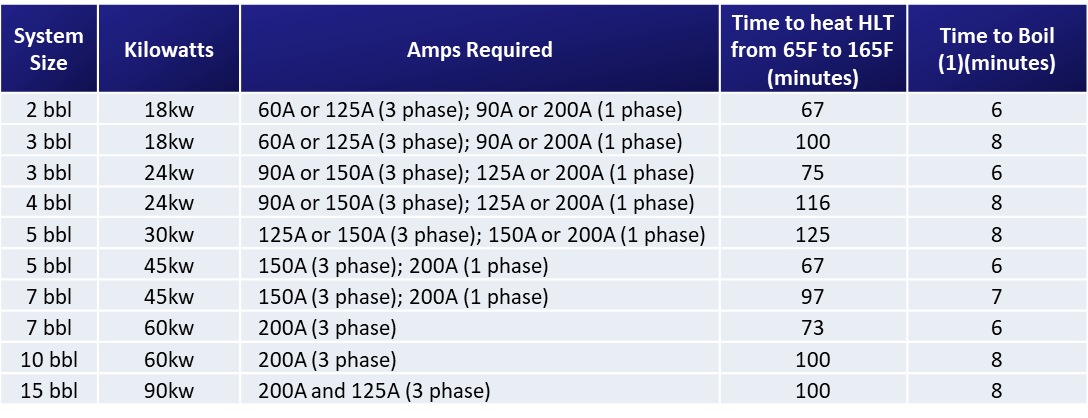
The key to designing a good electric brewing system, even up to 15 BBL, is to be able to control the temperature of the water and the amount of power going to the elements. At Stout Tanks and Kettles, we design our tanks to place all of the components of an electric brewing system in the right place, including float switches, thermowells for thermometers and temperature sensors, and of course the optimum placement of heating elements. This means that the water heats evenly and consistently throughout the kettle.
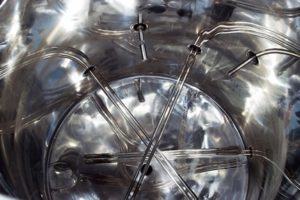
Brewmation, our partner for controls, provides industrial-duty control panels capable of providing all the electricity to the elements, with precise control over the temperature and the amount of power delivered. These control panels can deliver any amount of power from 1% to 100% of maximum power. This level of precision will give you the control over your boil that you need, from reducing the heat after adding hops to ensuring a consistent evaporation rate from batch to batch.
The boil is an essential part of the brewing process, and controlling your temperature and evaporation rate precisely can mean the difference between a pretty good beer, and a great beer. Lots of things are happening during your boil. One of the simpler functions of the boil is simply to sterilize the wort. In order to kill off the Lactobacillus bacteria present in your wort, you have to achieve a good boil.
Beyond simple sterilization, the boil is a critical step in building the flavors in your beer. Boiling affects the flavor profile of the beer by allowing certain proteins to combine with polyphenols and tannins in the wort. The time, temperature, and evaporation rate of the boil can affect how quickly this process occurs, and thus how the flavor evolves.
Some recipes depend on Maillard reactions between amino acids and reducing sugars that create a “caramelizing” or “browning” effect in the wort, adding flavor and color. Maillard reactions do not require enzymes, but do need temperature high enough to sustain the reaction. Much of the Maillard reactions happen in kilning the malts. But some also occur in the boiling kettle at the right temperatures.
The duration and intensity of the boil also affects the isomerization of the acids in the hops. Isomerization is the process by which one molecule becomes another molecule by rearranging the atoms into a different sequence. During the boil, the acids in the hops actually change their molecular sequence, and thus their flavor and aromas. Being able to reproduce the temperature and time profiles of a brew will allow you to create the same isomers of your hops every time. Electric brewing systems have an advantage over direct fire because it is easier to reproduce the heating profiles from batch to batch.
The boil can also affect the amount of Dimethyl Sulfide (DMS) in your beer. DMS is a sulfide molecule that is formed in the wort, and is responsible for that “creamed corn” smell in your wort. All malt contains S-Methyl Methionine (SMM). This is an amino acid formed during germination and malting. During mashing, and even in the boil, SMM is converted to DMS. The only way to get rid of the DMS is to boil it off. The half-life of DMS is about 40 minutes, which means that half of the DMS disappears after 40 minutes of a vigorous boil. Many brewers like to boil for at least 90 minutes to get rid of about 2/3rd of the DMS in the wort. Rapidly cooling your wort after the boil with a heat exchanger will minimize the amount of DMS that forms in the wort after the boil is done.
Clean up with electric systems is straightforward. With high quality all stainless steel elements, you should see minimal scorching or caramelizing of sugars on the heating elements. With a good CIP (Clean In Place) system, your electric brew system should stay clean, requiring element removal about once a week, typically.
FINAL THOUGHTS…
In sum, electric brewing systems can be a very effective option all the way up to 15 BBL systems. Installation costs can be much lower than steam or direct fire because no ventilation and no steam fitter is required. Operating costs can be significantly lower too, because electric heat is so much more efficient. But the biggest advantages come from automating your brewing process and having precise control over your brew at all stages. The magic of beer happens through invisible chemical reactions that all all controlled by heat. Control the heat, and you will control the magic.
[1] https://www.forbes.com/sites/sarahlandrum/2017/03/17/millennials-driving-brands-to-practice-socially-responsible-marketing/#718231484990

